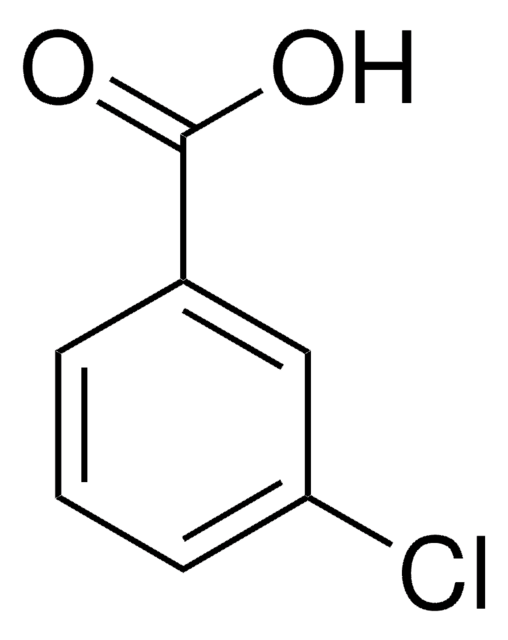C46403
3-Chloro-1-propanol
98%
Sinonimo/i:
1-Chloro-3-hydroxypropane, Trimethylene chlorohydrin
About This Item
Prodotti consigliati
Saggio
98%
Forma fisica
liquid
Indice di rifrazione
n20/D 1.445 (lit.)
P. eboll.
160-162 °C (lit.)
Densità
1.131 g/mL at 25 °C (lit.)
Stringa SMILE
OCCCCl
InChI
1S/C3H7ClO/c4-2-1-3-5/h5H,1-3H2
LAMUXTNQCICZQX-UHFFFAOYSA-N
Cerchi prodotti simili? Visita Guida al confronto tra prodotti
Categorie correlate
Applicazioni
- Improved Synthesis of Pheromone Components: 3-chloro-1-propanol is used as a linchpin to connect the two synthetic blocks in the synthesis of 6,14-dimethyl-1-octadecene. It is likely used as a reactant in a chemical reaction to facilitate the coupling of the two synthetic blocks, enabling the formation of the desired compound (Taguri et al., 2010).
Avvertenze
Warning
Indicazioni di pericolo
Consigli di prudenza
Classi di pericolo
Eye Irrit. 2 - Skin Irrit. 2 - STOT SE 3
Organi bersaglio
Respiratory system
Codice della classe di stoccaggio
6.1C - Combustible acute toxic Cat.3 / toxic compounds or compounds which causing chronic effects
Classe di pericolosità dell'acqua (WGK)
WGK 3
Punto d’infiammabilità (°F)
167.0 °F - closed cup
Punto d’infiammabilità (°C)
75 °C - closed cup
Dispositivi di protezione individuale
Eyeshields, Faceshields, Gloves, type ABEK (EN14387) respirator filter
Scegli una delle versioni più recenti:
Possiedi già questo prodotto?
I documenti relativi ai prodotti acquistati recentemente sono disponibili nell’Archivio dei documenti.
I clienti hanno visto anche
Il team dei nostri ricercatori vanta grande esperienza in tutte le aree della ricerca quali Life Science, scienza dei materiali, sintesi chimica, cromatografia, discipline analitiche, ecc..
Contatta l'Assistenza Tecnica.










